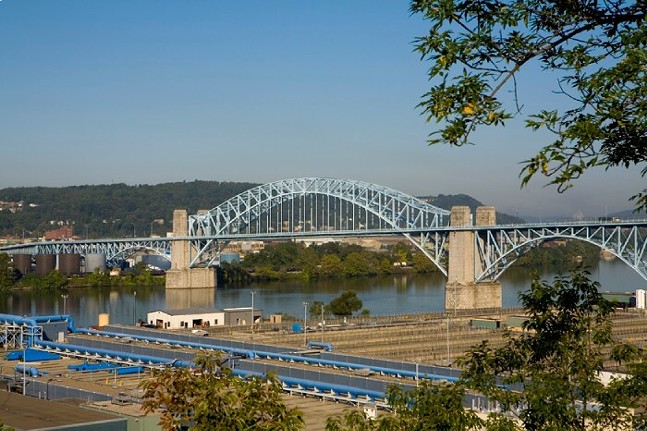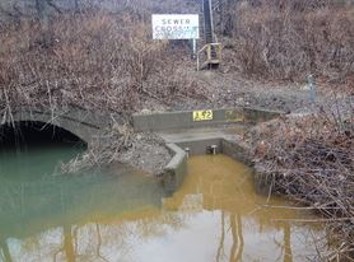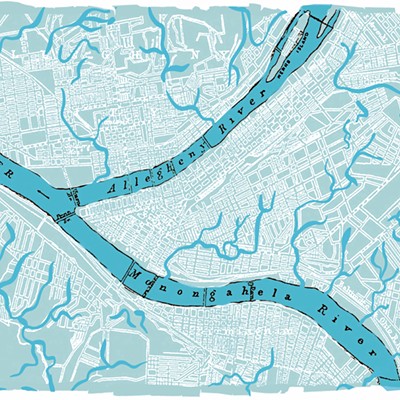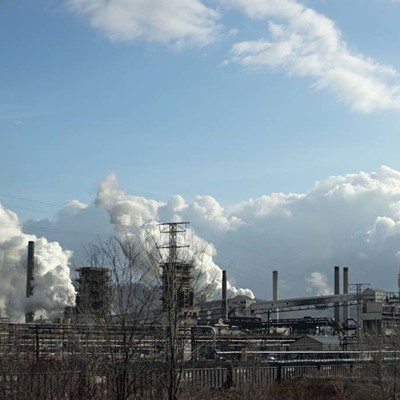The county sanitary authority has committed $2 billion to a series of ambitious upgrades over the next 15 years, but the authors of a new study say even then the improved system will continue to leak nearly 3 billion gallons of wastewater into rivers and streams every year.
Speaking this morning on the steps of the City-County Building, advocates and civic officials led by environmental advocacy nonprofit Penn Environment called for additional measures to reduce the harmful wastewater that ends up in the watershed. If the right steps are taken, they say, residents should one day be able to safely swim and bathe in major rivers like the Allegheny and the Ohio.
“For the sake of our health, and the health of our ecosystem, we can do better and we must do better,” said Dan Brown, Western Pennsylvania field organizer at Penn Environment.
Much of the aging sewage infrastructure throughout Allegheny County is unable to separate rainwater from wastewater, which overwhelms the system during periods of heavy precipitation, channeling excess flows straight back into the surrounding rivers and streams.
ALCOSAN has been working to reduce these outflows since 2007, when it was sued in federal court for violating both federal and state laws regulating water quality. Following years of negotiations, the authority released its Clean Water Plan in 2020.
The plan is projected to cost $2 billion dollars and will take until 2036 to complete.
Brown acknowledged this as “an important step in the right direction,” but said the sanitary authority and area municipalities need to commit to further improvements. According to the new study, these could take the form of “gray” projects, ones that work to collect more runoff from roads and asphalt, or “green” projects, like rain gardens or swales, that absorb rainfall naturally.
Brown said funding for both kinds is still available from a $1 trillion federal infrastructure bill passed last summer and suggested more municipalities should enact stormwater fee schedules that collect payments from property owners who contribute to water runoff.
Brown also criticized ALCOSAN’s lengthy construction timeline, which, he said, would continue to permit around 9 billion gallons of untreated wastewater each year until 2036.
In a statement, ALCOSAN spokesperson Joey Vallarian told Pittsburgh City Paper the chosen time frame reflects the rate at which the authority can afford to do the work, funded largely by substantial customer rate hikes.
“ALCOSAN is excited about the implementation of its Clean Water Plan, which will significantly reduce the volume of overflows by 7 billion gallons by 2036,” Valerian said.
He added that it is "also important to remember that after 2036, ALCOSAN is required to evaluate and plan for additional measures to eliminate the remaining overflows.”
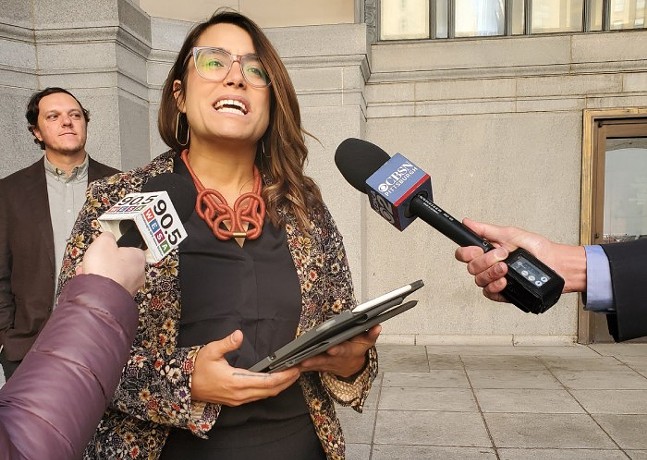
Heather Hulton VanTassel, executive director at Pittsburgh-based nonprofit Three Rivers Waterkeeper, said the effects of climate change and regional development may further tax the local sanitary systems, and suggested improvement plans should be designed to accommodate this.
“We need to strive for the complete elimination of sewage in our waterways,” VanTassell said.
Among those gathered on Grant Street this morning, State Rep. Sara Innamorato (D-Lawrenceville) pointed to green infrastructure projects in Aspinwall, Etna, and Millvale, which reduce runoff and beautify the area, as examples to replicate around the region.
“We can build out a vision for a greener future that leaves the next generation of Pittsburghers a region with clean rivers that they too will get to enjoy,” Innamorato said.

